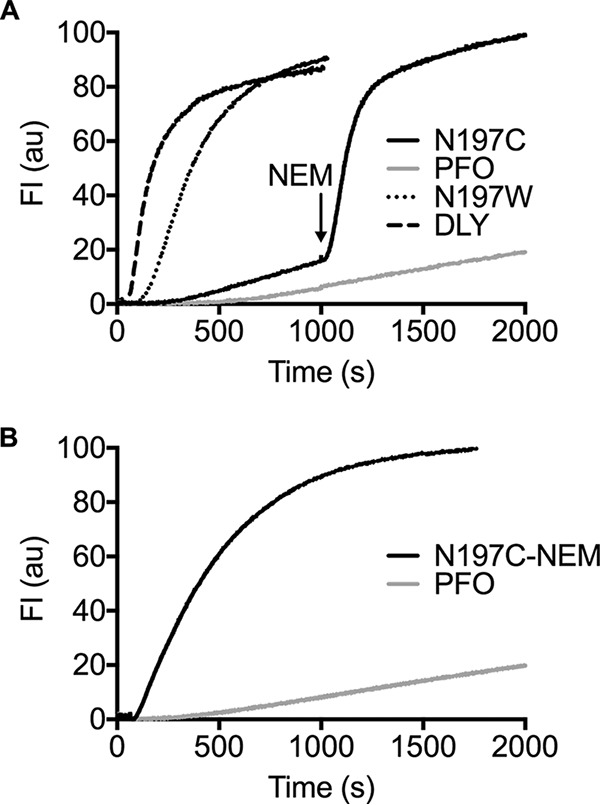FIG 5.

Pore formation by PFON197C at low temperature modified with NEM before and after prepore assembly. (A) Pore formation was monitored over time by CF release from liposomes treated with PFO (±NEM), PFON197W, PFON197C (±NEM), and DLY at 6°C. CF release by PFO and PFON197C was monitored for 1,000 s to allow for prepore formation, and then N-ethylmaleimide (NEM) was injected (final concentration of 100 μM) to modify the sulfhydryl of N197C. As shown, NEM triggers the rapid conversion of prepore PFON197C but has no effect on the low rate of pore formation by PFO. (B) The cysteine sulfhydryl of PFON197C was labeled with NEM prior to injecting it into liposomes at 6°C compared to PFO. Note that the rate of pore formation by PFON197C is higher when the prepore is allowed to first assemble followed by the injection of NEM in panel A than when PFON197C is labeled with NEM prior to its injection into the liposomes in panel B.
